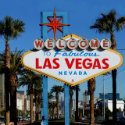Baicells, CommScope, Ubicquia and Terranet Communications built an LTE network covering 65 square miles of the city of Las Vegas, offering speeds up to 35 Mbit/s.

In December, at the height of the pandemic, the city of Las Vegas lit up a fixed wireless network covering 65 square miles and offering download speeds up to 35 Mbit/s. The city's initial goal was to connect homebound students to their teachers in cases where they might not have a home Internet connection.
Now, as pandemic restrictions ease, the city and its network vendors are looking for ways to expand and improve the network in ways that would position Las Vegas as a "smart city."
"The network serves a variety of business use cases outside of education and is not limited to serving just one specific use case," explained Michael Sherwood, CIO of the City of Las Vegas, in written responses to questions from Light Reading. "The need for connectivity does not end, regardless if students are in the classroom or learning remotely. The ability to submit assignments, collaborate and access school resources creates a conducive environment for continued learning. The ability to research and expand educational opportunities to include local community colleges and universities will allow great flexibility and opportunity, and should increase the educational user base."
Although Sherwood wouldn't answer questions about the money it took to light up the network, a video produced by the network's vendor indicates the state of Nevada used around $1 million in federal coronavirus stimulus money to construct the private wireless LTE network. Baicells, CommScope and Ubicquia supplied the hardware and Terranet Communications constructed the network in just over a month, in part by positioning around two dozen transmission towers atop city-owned infrastructure. The network runs in the CBRS 3.5GHz spectrum band, but Terranet CEO Bart van Aardenne did not answer questions about whether the city is using the licensed or unlicensed portion of the CBRS band.
The network, launched late last year, was provided for free to an unspecified number of students in Las Vegas. The city hopes to use the network during the fall semester to support around 1,000 K-12 students as well as other business and smart city applications including potentially telemedicine, autonomy, and sensors.
"We see a bright future in wireless and in leveraging wireless to help our diverse community grow economically as well as provide community benefit and inclusion," Sherwood, of Las Vegas, explained. "The speed and flexibility over in-ground fiber and other technologies makes this a highly scalable and attractive opportunity."
Both the city and Terranet are "exploring" a number of additional applications for the network, including potentially mobile services or integrations with other Las Vegas smart city efforts. They're also looking at how to potentially integrate the network with commercial networks, such as the one operated by AT&T, in the city. However, city and company officials declined to provide any more specifics around their plans.
Las Vegas is not the only city to use coronavirus stimulus funding to construct a city network for online schooling and other educational uses. The Patterson Unified School District in Patterson, California; Carnegie Mellon; McAllen, Texas; and Tucson, Arizona, have all constructed wireless networks for similar applications in recent months.
And such efforts may get a massive shot in the arm if lawmakers agree to broadband infrastructure legislation that would funnel billions of dollars toward the construction of telecom networks. Such funding would dovetail with growing interest around private wireless networks that serve specific private or government uses and are separate from commercial operators' public networks.
Indeed, the overall opportunity for such private wireless networks may be significant. According to Nokia, the global market for private wireless networks like the one built in Las Vegas could ultimately double the size of the global, commercial wireless network market.
Related posts:
— Mike Dano, Editorial Director, 5G & Mobile Strategies, Light Reading | @mikeddano
About the Author(s)
You May Also Like










